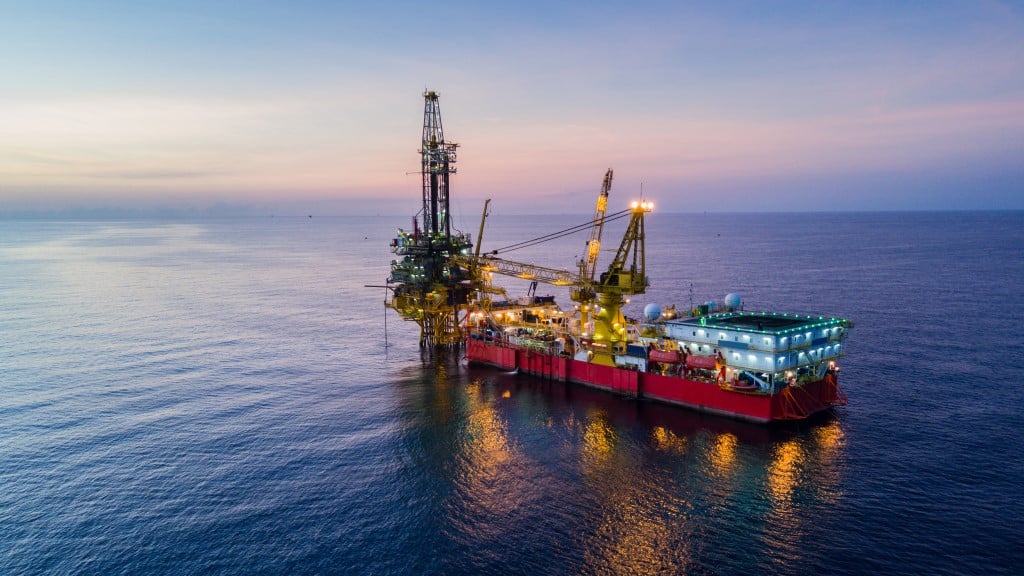Global marine fire safety system market to reach USD 159.1 billion by 2032
- June 11, 2024
- 11:50 am


Iain Hoey
Share this content
Market growth driven by advanced fire safety technologies and crew training
The global marine fire safety system market is projected to expand from USD 86.05 billion in 2023 to USD 159.1 billion by 2032, growing at a CAGR of 6.1% during the forecast period of 2024–2032, as reported by Industry Today.
This growth is attributed to the increasing demand for advanced fire detection and suppression technologies in maritime operations.
The emphasis on crew training and competency development is also a key factor propelling the market, with shipowners and operators recognising the importance of well-trained personnel in effectively responding to fire emergencies and reducing risks to life and property.
Environmental sustainability and regulatory compliance are significant factors fuelling the market.
With rising scrutiny on the environmental impact of traditional firefighting agents, there is an increasing demand for alternative solutions that minimise ecological harm while maintaining fire safety efficacy.
Impact of artificial intelligence on marine fire safety systems
Artificial intelligence (AI) is transforming fire safety measures in the maritime industry.
By integrating AI-powered systems, vessels can proactively detect potential fire risks, analyse complex data patterns, and execute swift responses to enhance safety.
AI algorithms facilitate predictive modelling, allowing maritime authorities and ship operators to forecast fire occurrences based on historical data, environmental conditions, and vessel-specific parameters.
AI-driven solutions also optimise resource allocation by autonomously directing firefighting efforts and deploying extinguishing agents precisely where needed.
This advanced technology is revolutionising how vessels mitigate and prevent fire hazards, providing a significant boost to safety measures on board.
Major drivers and existing restraints in the market
The increasing globalisation and international trade within the maritime industry are primary drivers of the market.
The expansion of maritime activities in key shipping routes and ports worldwide is expected to drive the adoption of advanced fire prevention and suppression technologies to protect valuable assets and ensure uninterrupted trade operations.
Additionally, concerns over onboard safety and the protection of human lives are fuelling the market.
With passenger vessels, cruise ships, and ferries accommodating large numbers of travellers, safety remains paramount, prompting investments in cutting-edge fire detection and suppression technologies.
However, the complexity and cost of implementing advanced marine fire safety systems pose significant restraints.
The high initial investment required for installing and maintaining sophisticated fire detection, suppression, and control equipment deters small and medium-sized vessel owners from upgrading their safety systems.
Furthermore, environmental concerns over traditional fire suppression agents limit the market due to regulatory restrictions and international agreements aimed at phasing out ozone-depleting substances and reducing greenhouse gas emissions.
Emerging opportunities and regional outlook
The rapid digitalisation and automation of maritime operations are creating lucrative opportunities for the integration of AI and machine learning (ML) technologies in the market.
AI-powered predictive analytics enable ships to anticipate fire hazards based on real-time data insights, allowing for proactive risk mitigation measures and reducing the likelihood of catastrophic incidents.
The rising demand for autonomous and unmanned vessels also presents new opportunities, with AI-powered fire detection and suppression systems, including autonomous firefighting drones and robotic devices, offering scalable and efficient solutions for mitigating fire risks in unmanned operations.
Regionally, North America held a major market share in 2023 due to stringent regulatory frameworks and the presence of prominent maritime industry players investing in advanced fire safety technologies.
The robust maritime infrastructure in North America, coupled with a strong focus on safety and compliance standards, is driving the adoption of sophisticated fire detection and suppression systems across various vessel types.
The Asia Pacific region is projected to experience significant growth due to robust economic development, increasing trade activities, and investments in port infrastructure across countries such as China, Japan, South Korea, and Singapore.
The region’s focus on enhancing safety standards and regulatory compliance in maritime operations, along with rising awareness of the importance of fire safety measures, is expected to drive the demand for advanced fire detection and suppression technologies.

